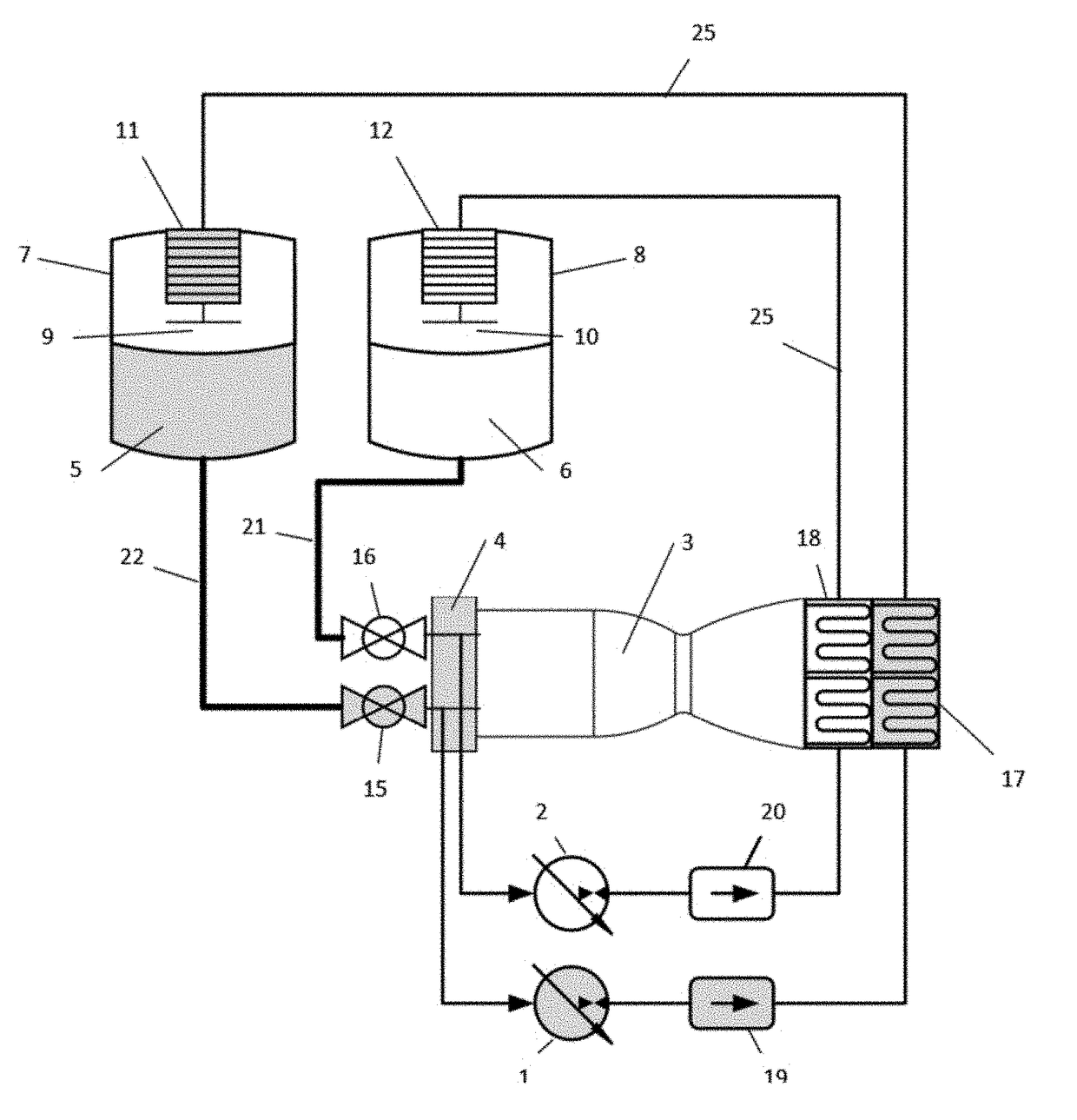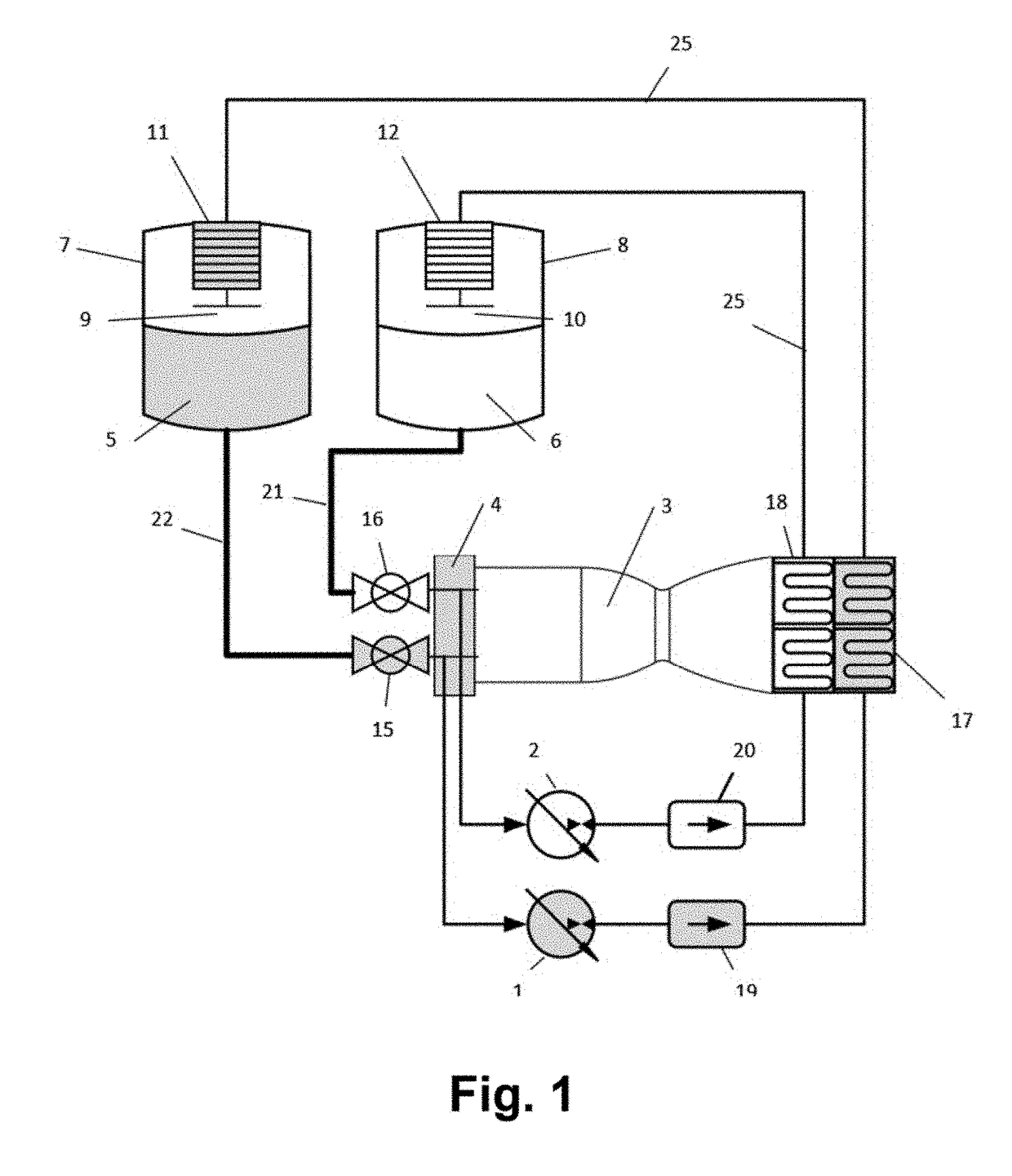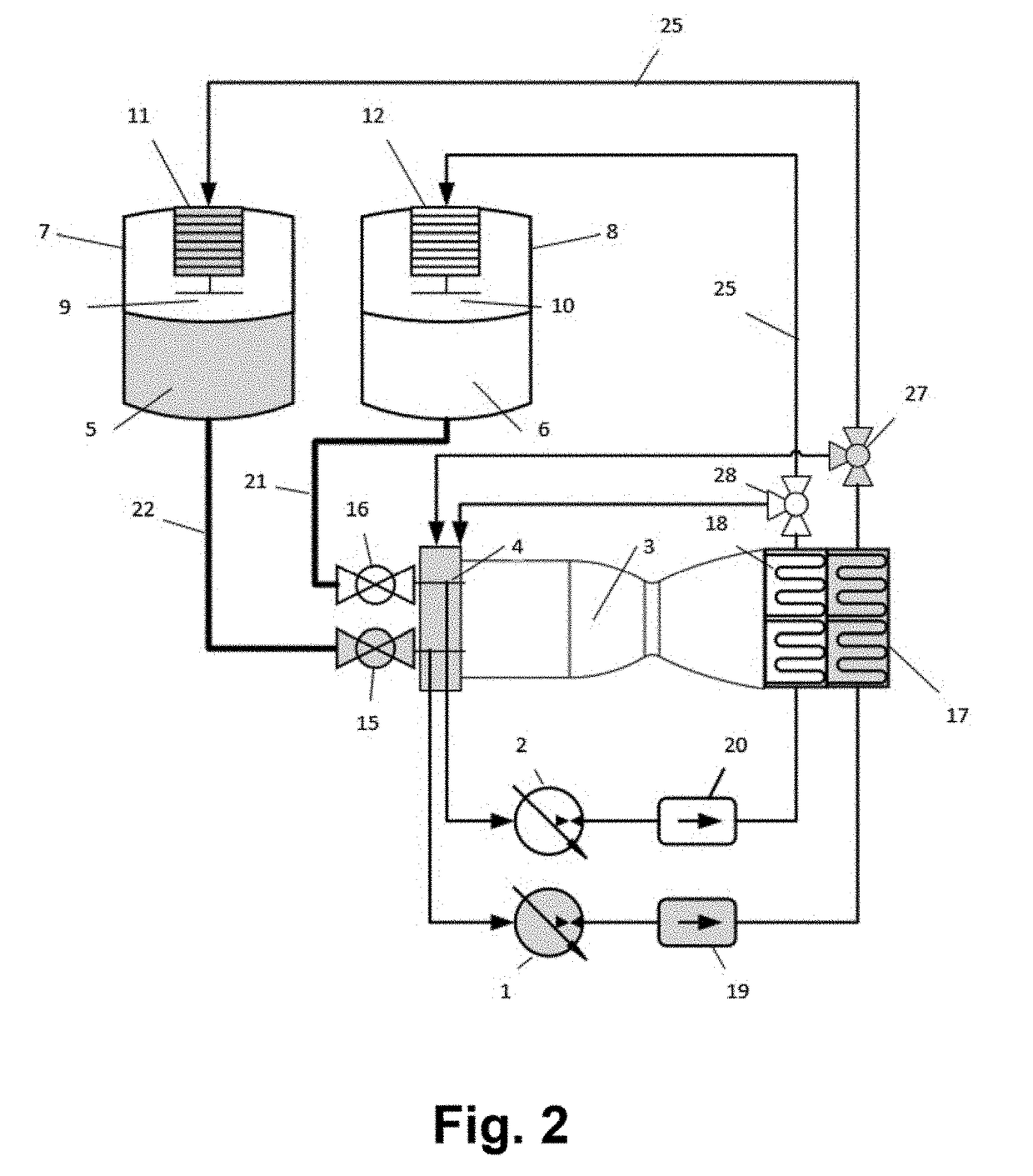Micropump-fed autogenous pressurization system
a technology of autogenous pressurization and micropump, which is applied in the direction of cosmonautic vehicles, rocket engine plants, machines/engines, etc., can solve the problems of large volume, heavy tanks, and inability to control the pressure profile of tanks, and achieves high efficiency, high cost, and high cos
- Summary
- Abstract
- Description
- Claims
- Application Information
AI Technical Summary
Benefits of technology
Problems solved by technology
Method used
Image
Examples
Embodiment Construction
[0030]The autogenous system for controlling pressurization of a propellant tank in a pressure-fed propulsion system may be either a monopropellant system, using a single propellant, or a bipropellant system, using at least two separate propellants such as a fuel and an oxidizer. As used herein, the term “autogenous” refers to a system that can function in an essentially closed loop with minimal assistance from external components. In a bipropellant system herein, the two propellants are maintained in primarily separate loops, but for their combined use in a combustion chamber, as described in further detail below.
[0031]FIG. 1 shows a bipropellant pump-fed autogenous system including a micropump 2 that pumps a propellant or fuel 6 from a propellant tank or fuel tank 8 into a combustion chamber 3 of an engine, such as a rocket engine, in which the propellant or fuel 6 is evaporated and heated. The micropump 2 controls the pressurization rate by controlling the flow of the fuel 6.
[0032...
PUM
 Login to View More
Login to View More Abstract
Description
Claims
Application Information
 Login to View More
Login to View More - R&D
- Intellectual Property
- Life Sciences
- Materials
- Tech Scout
- Unparalleled Data Quality
- Higher Quality Content
- 60% Fewer Hallucinations
Browse by: Latest US Patents, China's latest patents, Technical Efficacy Thesaurus, Application Domain, Technology Topic, Popular Technical Reports.
© 2025 PatSnap. All rights reserved.Legal|Privacy policy|Modern Slavery Act Transparency Statement|Sitemap|About US| Contact US: help@patsnap.com



